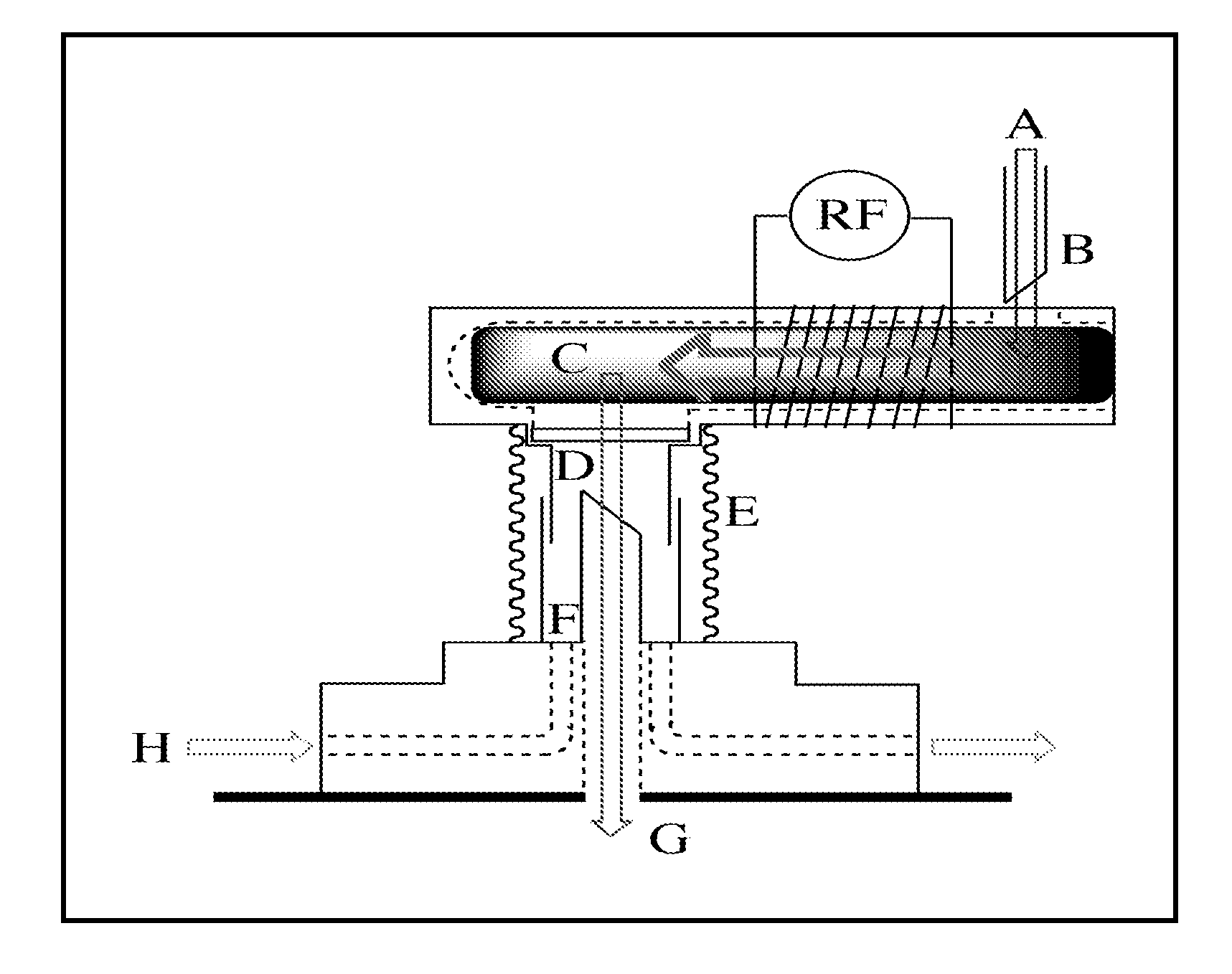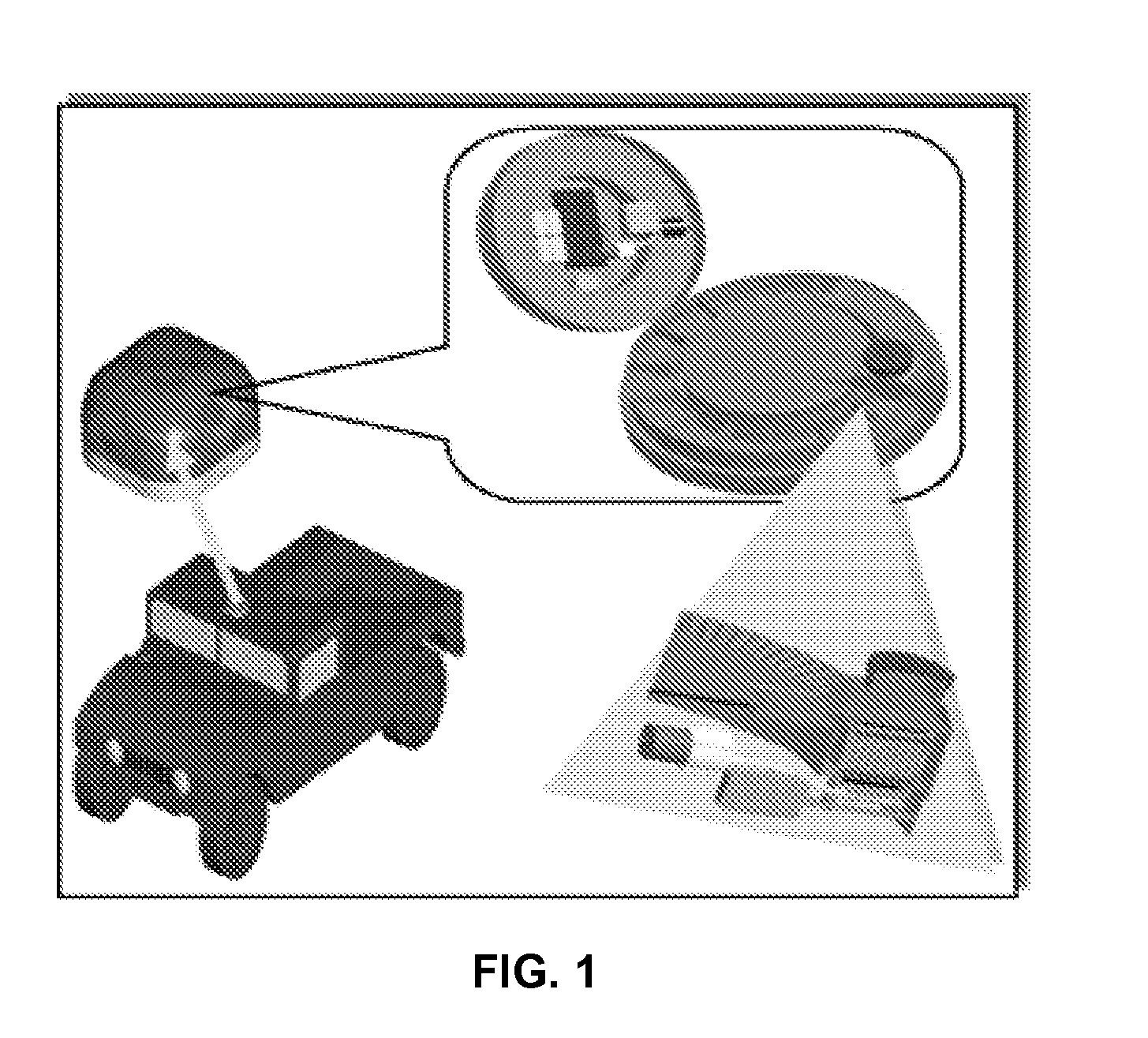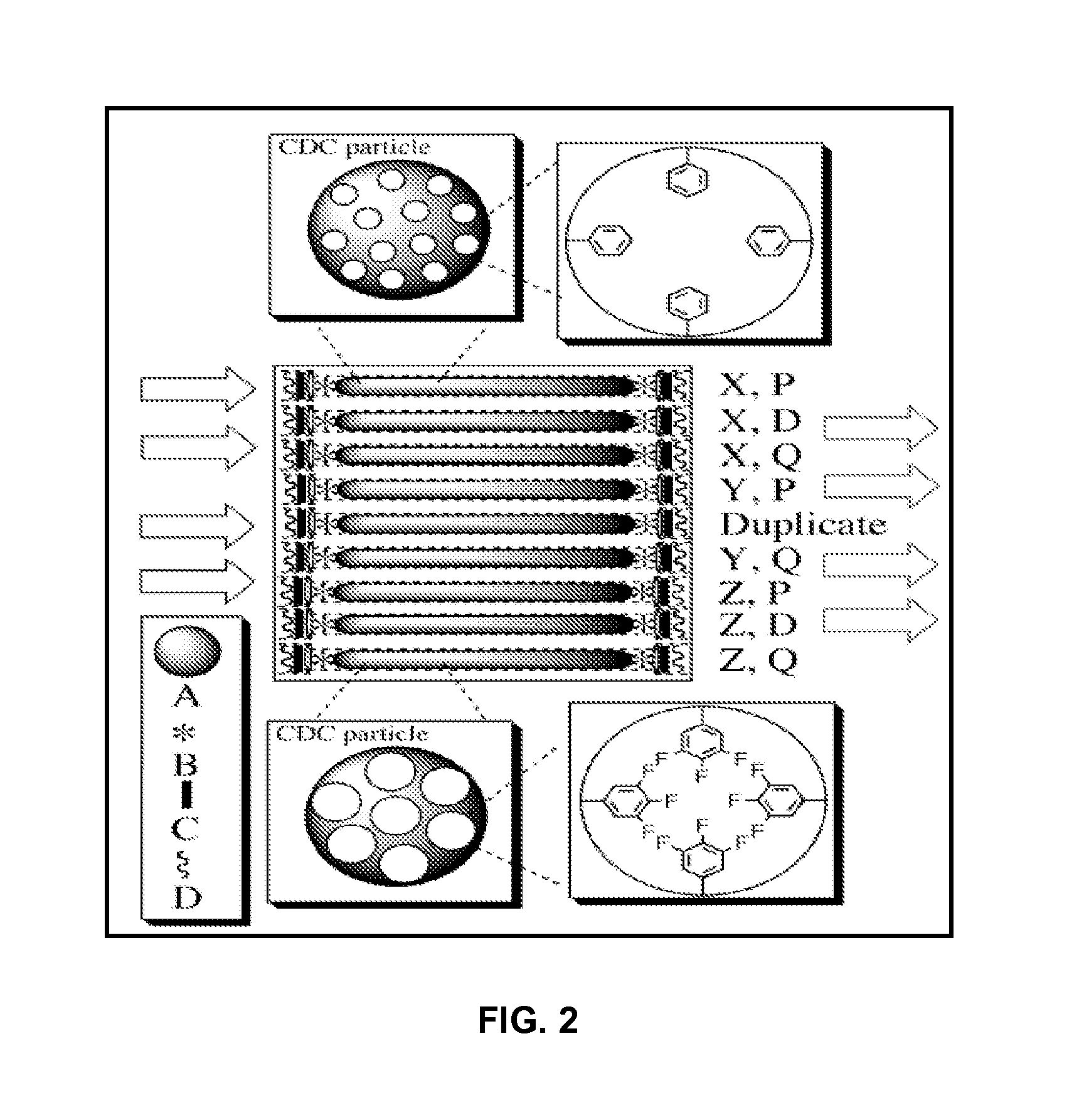Chemically modified organic cdc based rapid analysis system
a chemical modification and rapid analysis technology, applied in the field of chemical analysis methods and apparatuses, can solve the problems of limited pore size in mofs and cannot be done in many other porous materials, and achieve the effects of high specific surface area, high (sub-nanometer) precision, and greater impact on adsorption/desorption rates and profiles
- Summary
- Abstract
- Description
- Claims
- Application Information
AI Technical Summary
Benefits of technology
Problems solved by technology
Method used
Image
Examples
example 1
CDC Adsorption
[0068]To demonstrate the potential selectivity of this material, analytes from several chemical classes were exposed to CDC materials (synthesized from TiC at 600-1300° C. or MoC at 800° C.) with average pore sizes ranging from 0.7-1.5 nm. The CDC materials had one of four surface treatments (hydrogen; ammonia; argon; and argon with oxidation). Prior to exposure, 70±0.5 mg of each CDC material was placed into a 1 dram vial and sealed in an 11 dram vial with a resealable PTFE septum pierced by a 20 gauge needle. The samples were placed in a glass chamber and heated under vacuum (−165° C. at 5.5×10−5 torr) for 24 hours. The chamber was then cooled to room temperature. 10 μL of a solution containing ˜2.5×10−5 moles of each chemical (except for Xenon which was directly bubbled into the chemical solution) was injected into the chamber and allowed to vaporize and reach equilibrium. After 2 hours, the chamber was evacuated (1×10−4 torr) at room temperature, backfilled with ni...
example 2
CDC Adsorption of Weakly Adsorbent Species Compared to Commercial Sorbents
[0069]The hyperadsorptive capabilities of various CDCs were tested against several commercial sorbents. Absorption of low molecular weight, high vapor pressure analytes (ethane, propane, xenon) known to be weakly adsorbent was tested.
[0070]CDCs demonstrated superior storage capacity for methane uptake at ambient pressure as compared to zeolites, MOFs, and carbon nanotubes. As shown in FIG. 6, experiments on selected CDC samples showed that CDC outperformed activated carbons, MOFs, zeolites, and SWCNTs for methane uptake. This is attributable to the pore size distribution and tunable size of the pores and also to the strength of the interaction between the CDC materials and the gas molecules. This is evident by the very large heat of H2 adsorption on CDC, 8 kJ / mole, as compared to MOF and SWCNT.
[0071]Further experiments were carried out for ethane. Ethane is difficult to adsorb, as it is a small molecule with a...
example 3
Exclusion of Water
[0074]CDCs were tested to determine hydrophobicity as any hyper-adsorbent material that can be successfully used for air sampling must exclude as much water vapor as possible. A measure of the hydrophobicity of CDC was determined in both equilibrium and dynamic experiments. FIG. 8 shows the uptake of water on a CDC sample reported in percent change in mass as a function of time during an increase in relative humidity. At 90% relative humidity, only 0.7% change in the mass of CDC occurs at equilibrium. Calculations have shown that over 50% of the pore volume of the CDC is still available even at relative humidity greater than 80%. This extreme hydrophobicity allows CDC to be used in high humidity environments.
[0075]In order for a highly hydrophobic material to function successfully in COBRA, it must remain adsorbent for analytes of interest while still excluding water. To confirm that a hydrophobic CDC has this ability, a series of experiments were completed with 25...
PUM
| Property | Measurement | Unit |
|---|---|---|
| Temperature | aaaaa | aaaaa |
| Temperature | aaaaa | aaaaa |
| Temperature | aaaaa | aaaaa |
Abstract
Description
Claims
Application Information
 Login to View More
Login to View More - R&D
- Intellectual Property
- Life Sciences
- Materials
- Tech Scout
- Unparalleled Data Quality
- Higher Quality Content
- 60% Fewer Hallucinations
Browse by: Latest US Patents, China's latest patents, Technical Efficacy Thesaurus, Application Domain, Technology Topic, Popular Technical Reports.
© 2025 PatSnap. All rights reserved.Legal|Privacy policy|Modern Slavery Act Transparency Statement|Sitemap|About US| Contact US: help@patsnap.com



